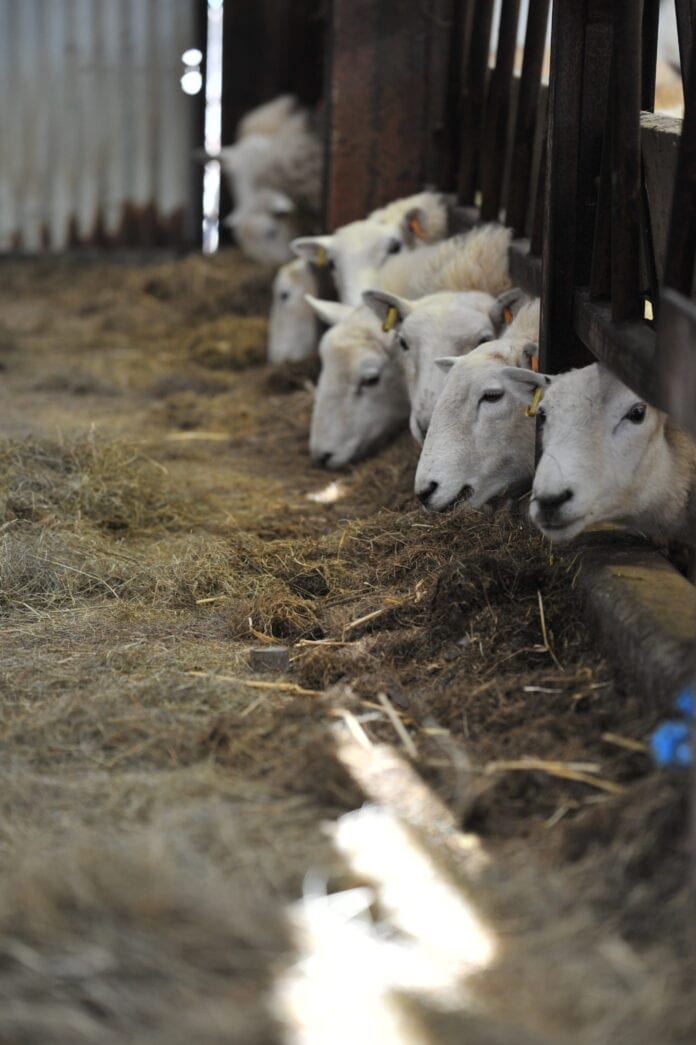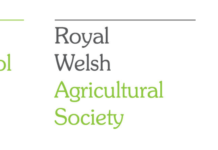Forage analysis is the starting point to managing ewe nutrition successfully in the run-up to lambing, advises sheep consultant Lesley Stubbings.
The nutrient level of forages will inform what level of supplementation flocks need in late-pregnancy, Ms Stubbings told farmers at a recent Farming Connect webinar.
Protein and energy levels in forages can vary widely yet with an accurate breakdown of its content, decisions can be made on how it should be used and what type of supplement to feed.
“Forage quality affects how much nutrition the ewe gets in every mouthful she eats, if you don’t have an analysis, you can’t work it out,” Ms Stubbings explained.
Farming Connect can offer one-to-one advice with a specialist to discuss nutritional needs of your herd/flock to maximise performance through the Advisory Service. The Advisory Service can test all forage produced on the farm, undertake detailed analysis and produce rations for various stock on the farm to ensure that the correct nutrients are provided for the pregnant ewe or milking cow.
Alternatively, if you have already sampled your forage, there are 1 hour long surgeries available held digitally either over the phone or via video conferencing. Specialists can look at your forage analysis to discuss feed quality and quantity or provide details of alternative feed options.
Ms Stubbings recommended assessing forage by hand too. A ‘squeeze test’ will yield moisture if silage is below 35% dry matter (DM).
Use a pH meter or litmus paper to check pH status and assess the sharpness of the fibre – the ewes will eat less if the fibre is longer because they have to work harder; a ‘sniff’ test is important too.
“All of these things will affect how much silage is eaten,” said Ms Stubbings.
She insisted that it was “plain wrong” to believe that a heavily pregnant ewe can’t manage high intakes of forage in late pregnancy.
When a ewe needs to process more feed, the rumen outflow rate is four times faster in late pregnancy than midway through.
“There is a theory that the rumen gets squashed as the lambs develops but it is illogical to believe that an animal designed to produce lambs cannot eat enough to sustain her and her lambs – after all sheep can’t manufacture concentrates,” said Ms Stubbings.
She provided guidance on supplementing a 70kg twin-bearing ewe from mid-pregnancy according to the nutrient values of three different quality forages.
At a digestibility (D) value of 70, 11.2% ME, 52% DM and 13% crude protein, feed 200g/ewe/day of a 34% protein pellet; this assumes a daily forage intake of 2.5kg.
For a wetter silage at D-value 68, 10.9ME, 23% DM and 13% crude protein, feed 350g/ewe/day of a 35% protein pellet. If the monitoring of forage intake suggests that forage being consumed daily is lower than 2.5kg/ewe, increase supplementation to 450g/day of a 21% compound or meal as in silage of this quality fermentable energy is lower.
“But look at the analysis and take everything into consideration,” Ms Stubbings advised.
A lower quality silage with a D-value of 58, 9.3% ME, 51% DM and a crude protein of 11% will require balancing with a high quality 18% compound feed at 750g/ewe/day. But in this situation Ms Stubbings recommended a ‘flatter’ approach to feeding. “Feed at the higher level at begin with and allow for a little bit of condition loss in the later stages,” she said.
Monitoring forage intakes is important – weigh some bales and work out how many are eaten.
When assessing the quality of a compound feed, look at the ingredients on the label which appear in descending order according to their level of inclusion – the dominant ingredient is at the top.
Although the percentages are never shown, the position of molasses on the label can provide a clue, Ms Stubbings pointed out. “Molasses is typically included at 5-7% so any ingredients listed above them will be at a level higher than 7%.”
If a feed has sunflower seed and palm kernel included, these should ideally be at the bottom as they have limited feed value.
If providing forage in ring feeders ensure there are sufficient to allow all ewes access to the feed – but not too many as this will result in forage not getting cleaned up.
“If it hangs around for days and ferments you can have problems with listeria,” Ms Stubbings warned.
If transitioning from roots to forage, provide some forage for a few days before making the switch as a ‘cushion’ to allow microbes in the ewe’s rumen time to adjust to the new diet.
Mineral licks, blocks and buckets have their place in a sheep system, said Ms Stubbings, but farmers should bear in mind that per unit of energy and protein they are an expensive means of providing these.
Before going down this route, she advised farmers to first consider if they are making as much use of their forage as they could by producing higher quality silage.
Farming Connect, which is delivered by Menter a Busnes and Lantra, has received funding through the Welsh Government Rural Communities – Rural Development Programme 2014-2020, which is funded by the European Agricultural Fund for Rural Development and the Welsh Government.
Help keep news FREE for our readers
Supporting your local community newspaper/online news outlet is crucial now more than ever. If you believe in independent journalism, then consider making a valuable contribution by making a one-time or monthly donation. We operate in rural areas where providing unbiased news can be challenging. Read More About Supporting The West Wales Chronicle


























